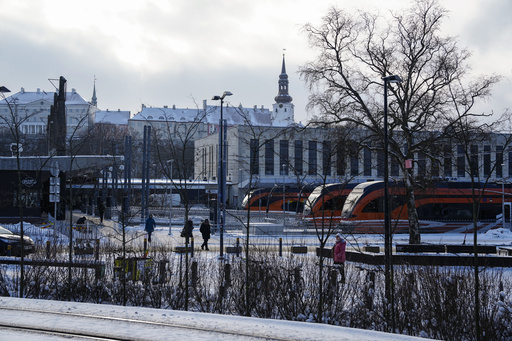
Estonia, Latvia, and Lithuania have confirmed their dedication to finishing the Rail Baltica project by the end of the decade. This high-speed rail project will connect the Baltic capitals of Tallinn, Riga, and Vilnius with passenger trains operating at speeds of up to 250 kph (155 mph). Launched in 2014 as a joint venture with funding primarily from the European Union, the project aims to integrate the Baltic countries into the continental European rail network.
Vladimir Svet, the Estonian infrastructure minister, emphasized the goal of commencing passenger and freight train operations along the entire Rail Baltica route by 2030. Despite facing challenges such as escalating costs, efforts are being made to identify cost-saving measures and improve efficiency in construction.
Initially estimated at 3.5 billion euros ($3.9 billion), a recent report by auditors from the three Baltic states highlighted a potential shortfall of up to 19 billion euros ($21 billion) for the completion of the project. The European Union, recognizing Rail Baltica as a significant European transportation initiative, is yet to clarify the extent of financial support it is willing to provide.
Construction of the new rail track spanning 870 kilometers (540 miles) began in 2019 but has encountered delays and disagreements over the project’s routing among the Baltic governments. The venture is currently lagging at least five years behind schedule, with the inaugural pan-Baltic trains originally intended to run in 2025.
Critics of the project question its economic feasibility for passenger travel, given the relatively small population of just over 6 million people across the three Baltic states. Suggestions have been made to prioritize cargo transportation, which is also a vital aspect of the initiative.
The Rail Baltica project holds symbolic significance for the Baltic States, marking a return to European connectivity. Following decades of being linked to the 1,520 mm Russian gauge rail system, the project signifies a reconnection with the European standard gauge of 1,435 mm.
Once operational, the high-speed train will reduce travel time significantly, with the journey from Tallinn to Vilnius expected to take just 3 hours and 38 minutes, compared to the current trip of up to nine hours by car or bus. The rail network will further extend southward, connecting the Baltic states with Warsaw, Poland, and ultimately Berlin.
Given the evolving geopolitical landscape in the Baltic Sea region following Russia’s invasion of Ukraine, Estonia, Latvia, and Lithuania stress the importance of investing in infrastructure capable of swiftly transporting large quantities of military equipment. Finland, indirectly involved through its extensive ferry connections with Estonia, also plays a role in the ambitious Rail Baltica project.
